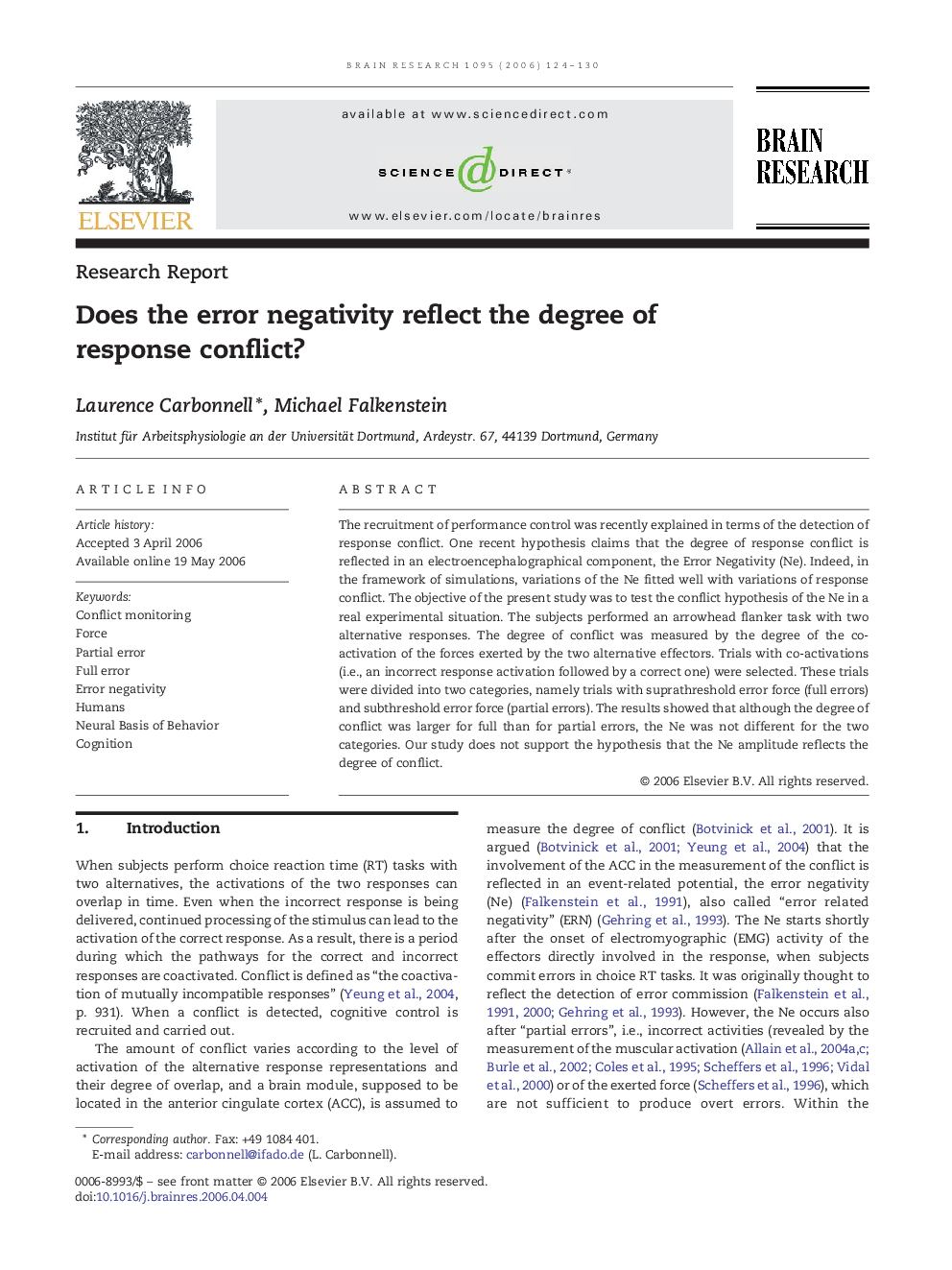| کد مقاله | کد نشریه | سال انتشار | مقاله انگلیسی | نسخه تمام متن |
|---|---|---|---|---|
| 4332689 | 1292907 | 2006 | 7 صفحه PDF | دانلود رایگان |

The recruitment of performance control was recently explained in terms of the detection of response conflict. One recent hypothesis claims that the degree of response conflict is reflected in an electroencephalographical component, the Error Negativity (Ne). Indeed, in the framework of simulations, variations of the Ne fitted well with variations of response conflict. The objective of the present study was to test the conflict hypothesis of the Ne in a real experimental situation. The subjects performed an arrowhead flanker task with two alternative responses. The degree of conflict was measured by the degree of the co-activation of the forces exerted by the two alternative effectors. Trials with co-activations (i.e., an incorrect response activation followed by a correct one) were selected. These trials were divided into two categories, namely trials with suprathreshold error force (full errors) and subthreshold error force (partial errors). The results showed that although the degree of conflict was larger for full than for partial errors, the Ne was not different for the two categories. Our study does not support the hypothesis that the Ne amplitude reflects the degree of conflict.
Journal: Brain Research - Volume 1095, Issue 1, 20 June 2006, Pages 124–130